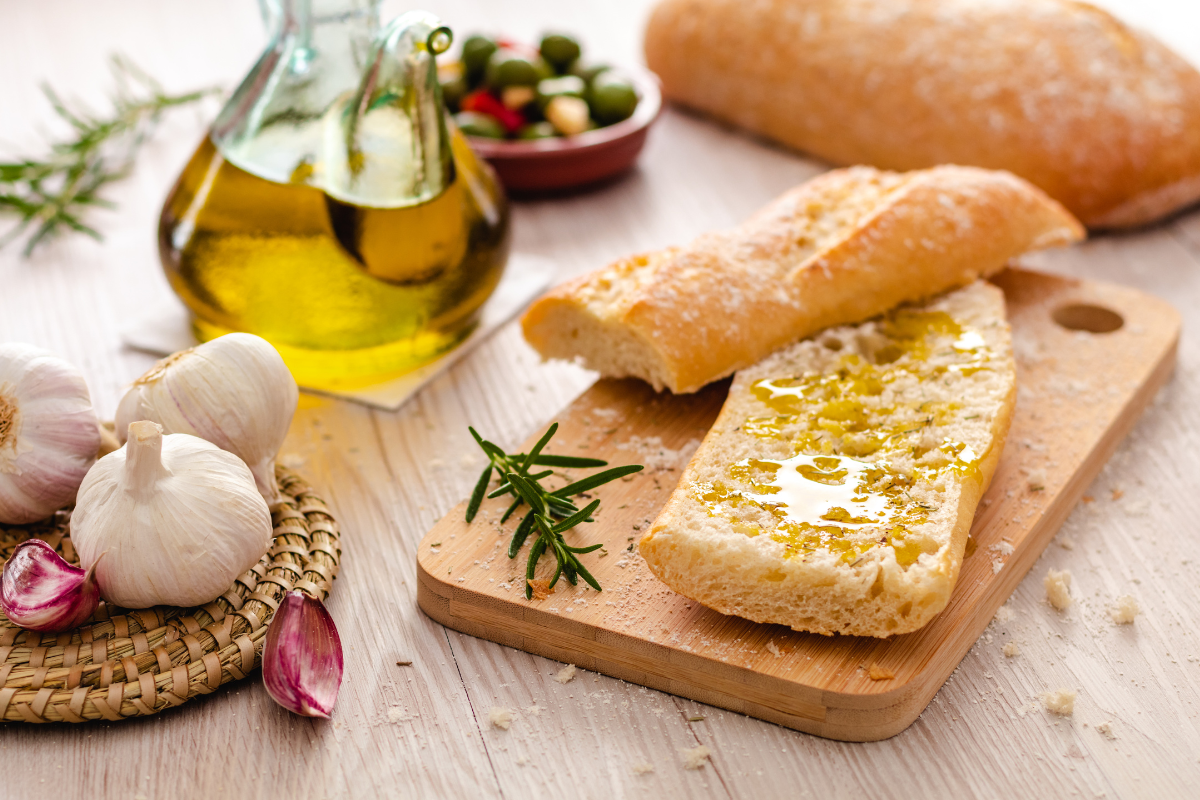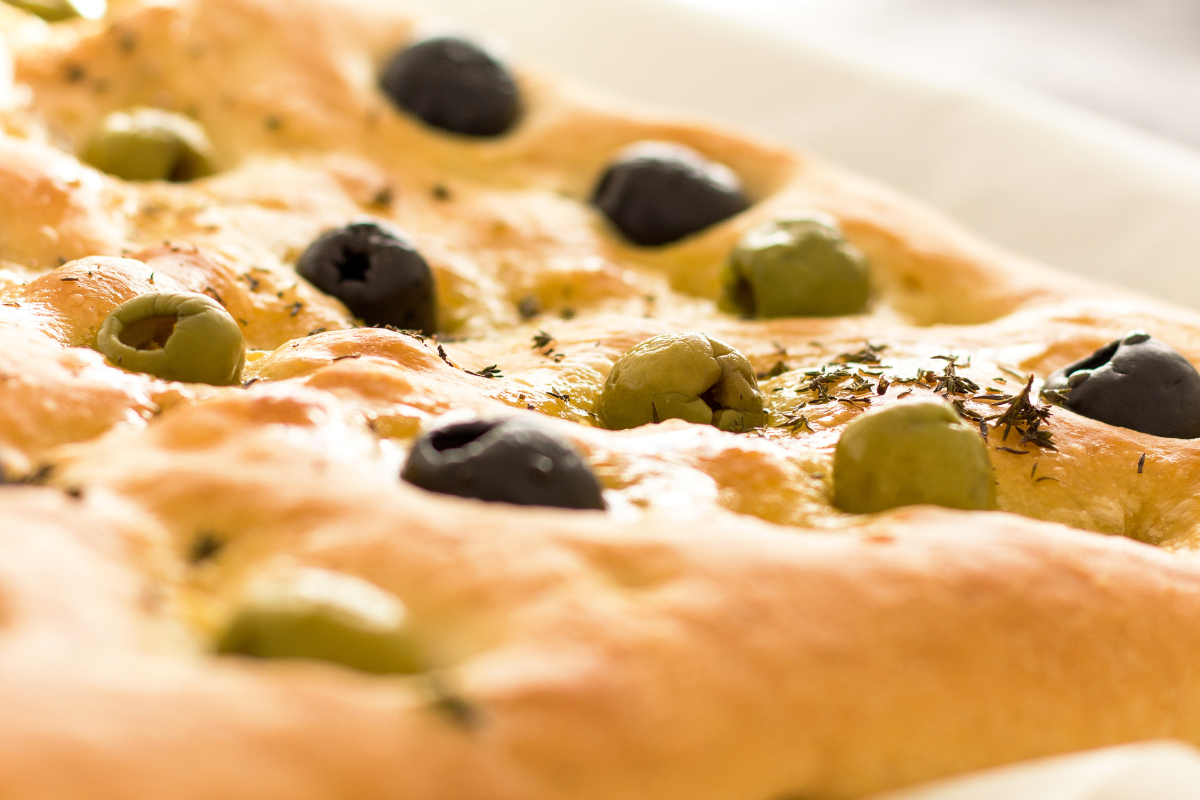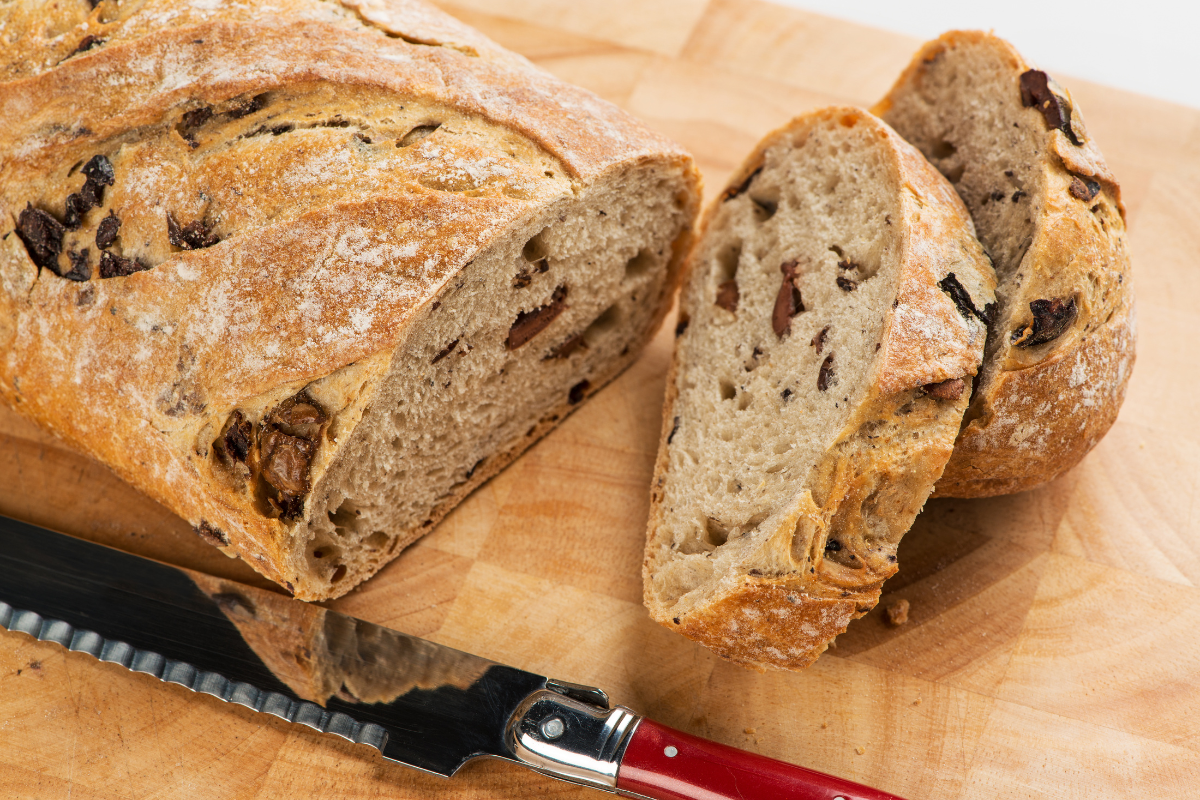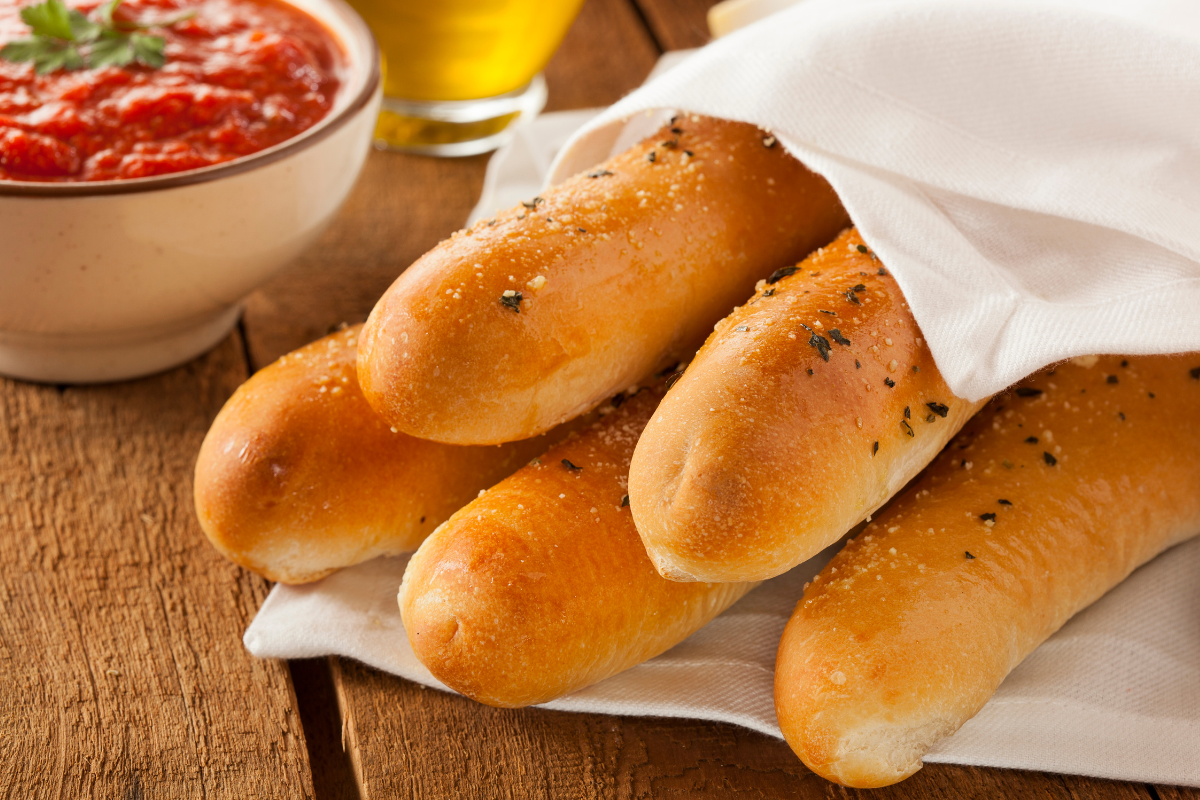Introduction to Olive Bread
Exploring Olive Bread
Olive bread, a culinary favorite, seamlessly blends the rich flavors of olives with the comforting texture of bread. This delectable combination has captivated hearts across numerous cultures, illustrating a profound culinary heritage and establishing itself as a beloved staple. Our Olive Bread Recipe guide aims to explore this culinary delight in depth, ensuring you can create a flavorful, texturally pleasing loaf that echoes centuries of tradition.
The Evolution and Diversity of Olive Bread
From the ancient times when olives were first cultivated, olive bread began to carve its niche in culinary history. As it journeyed through civilizations, it evolved, with each culture infusing its unique twist using local olive varieties and herbs. Today, the olive bread recipe continues to be a global favorite, celebrated for its versatility and the rich, savory punch it brings to the table.
Globally, olive bread is more than just a dish; it symbolizes a connection to cultural roots and culinary artistry. It is versatile, complementing meals, serving as a delightful snack, or acting as a robust base for a variety of toppings. This guide delves into the nuances of the Olive Bread Recipe, highlighting key ingredients, diverse preparation methods, and the cultural significance that makes this bread so special. Here, you’ll discover how to weave the essence of various traditions into your loaf, making each slice a tribute to olive bread’s rich, global tapestry.
 Key Ingredients and Their Roles
Key Ingredients and Their Roles
Essential Ingredients for Olive Bread
Crafting the perfect olive bread requires understanding the roles of its key ingredients. Each component, from olives to flour and fats, contributes to the bread’s flavor, texture, and aroma.
Choosing the Right Olives
The type of olives you choose can significantly affect your bread’s taste. Kalamata olives are a popular choice for their rich, fruity flavor, but you can experiment with green, black, or a mix of varieties. Consider the olive’s texture and salt content, as these will influence the bread’s final taste profile. Pitting and chopping the olives ensure they distribute evenly throughout the loaf, offering a consistent flavor in every bite.
Flour Selection and Its Impact
Flour is the backbone of any bread, providing structure and volume. Strong bread flour is ideal for olive bread, as it contains more gluten, which helps trap the gas produced during fermentation, resulting in a lighter loaf. Whole wheat flour can also be used, either solely or mixed with white flour, to add nutritional value and a nutty flavor, though it may result in denser bread.
The Role of Fats: Olive Oil and Others
Fats, particularly olive oil, are crucial in olive bread for several reasons. Olive oil enriches the dough, contributing to a tender crumb and enhancing the bread’s shelf life. The oil’s quality and flavor can also influence the bread, with extra-virgin olive oil adding a more pronounced taste. Besides olive oil, other fats like butter or vegetable oils can be used, but they will alter the bread’s flavor and texture. Olive oil remains the preferred choice, aligning with the bread’s Mediterranean roots and complementing the olives’ flavor.
Crafting Your Olive Bread: A Step-by-Step Guide
Preparing Your Dough
Start by mixing your chosen flour with salt and a leavening agent like yeast in a large bowl. Gradually incorporate water and olive oil, mixing until a dough forms. Knead this mixture, adding your chopped olives last to avoid crushing them. Kneading helps develop gluten, giving the bread structure and elasticity. Once kneaded, let the dough rest and rise, doubling in size. This rising time allows flavors to meld and the dough to develop air pockets, essential for a light, airy loaf.
The Baking Process
After the first rise, shape the dough into a loaf or place it in a greased baking tin. Allow it to rise again until it puffs up, showing it’s ready for the oven. Preheat your oven to the recommended temperature, usually around 375°F to 425°F (190°C to 220°C), depending on the recipe. Baking at the right temperature is crucial to develop a golden crust and fully cooked interior. Inserting the bread into a preheated oven is vital for a good rise and crust formation. Bake until the bread is golden brown and sounds hollow when tapped on the bottom, indicating it’s done.
Post-Baking Tips
Once baked, remove the bread from the oven and let it cool on a wire rack. Cooling is essential as it allows the bread’s structure to set and makes it easier to slice. Cutting into the bread too soon can cause it to become gummy or crumble. After cooling, olive bread is best enjoyed fresh but can also be stored in an airtight container to maintain its freshness. If the bread becomes stale, toasting slices can revive their texture and flavor.
Exploring Variations of Olive Bread
Incorporating Different Types of Olives
Olive bread can take on various characters depending on the olives you use. Beyond the popular Kalamata, consider adding green, black, or a mix for different flavor profiles. Each type of olive brings its taste and texture to the bread, creating unique variations. For instance, green olives can add a mild, slightly tangy flavor, while black olives offer a deeper, richer taste. You can also experiment with marinated or stuffed olives for additional flavors, ensuring they are well-drained to prevent excess moisture in the dough.

Herbs and spices are wonderful complements to the natural flavors of olive bread. Incorporate herbs like rosemary, thyme, or oregano directly into the dough to infuse the bread with aromatic notes. These herbs not only enhance taste but also add a delightful fragrance that elevates the baking experience. Spices such as black pepper or garlic powder can also be added for a more robust flavor profile. For a Mediterranean twist, try blending in sun-dried tomatoes or feta cheese with the olives. These add-ins not only contribute to the bread’s taste but also its texture and visual appeal. When experimenting with different herbs and spices, start with small amounts to ensure they complement rather than overpower the olives’ natural flavors.
Frequently Asked Questions
How healthy is olive bread?
Olive bread can be a healthy option, especially when made with whole-grain flour and high-quality olives. The olives provide healthy fats, primarily monounsaturated, and antioxidants. However, the overall healthiness depends on the other ingredients used and the bread’s serving size. Opting for whole grains can increase fiber content, enhancing its nutritional profile.
What are the ingredients in an olive loaf?
A typical olive loaf includes flour, water, yeast, salt, olives, and often olive oil. Variations might include additional ingredients like herbs, cheeses, or other seasonings to enhance flavor. The choice of olives and flour types can vary, allowing for customization according to taste and dietary preferences.
What do you eat with olive bread?
Olive bread pairs well with a variety of foods. It’s excellent for sandwiches, complements cheese, and charcuterie platters, and works well as a side for salads and soups. Its robust flavor also makes it a great standalone snack, especially when toasted and drizzled with olive oil.
Where is olive bread from?
Olive bread has roots in Mediterranean cuisine, particularly in countries like Italy, Greece, and France, where olives are a staple. Each region has its variation of olive bread, reflecting local olive varieties and culinary traditions. While it’s particularly associated with the Mediterranean, various forms of olive bread are enjoyed worldwide.
Tips for Perfect Olive Bread Every Time
Achieving a crunchy crust and an even olive distribution are crucial for crafting the ideal olive bread. Baking at the correct temperature and utilizing steam can create a desirable crust, enhancing the bread’s aroma and taste. Incorporating high-quality olive oil not only contributes to the flavor but also aids in achieving that golden, crispy exterior that’s so sought after in olive bread recipes.
When it comes to olive distribution, mixing the olives evenly throughout the dough ensures every slice is packed with flavor. Opting for a variety of olives, like Kalamata or a mix of green and black, can enhance the bread’s taste profile. Whether you’re making a no-knead olive bread or a more traditional kneaded loaf, the key is to incorporate the olives gently to avoid crushing them and to ensure they’re distributed evenly throughout the dough.
In your quest for the perfect loaf, exploring variations like rustic olive loaf or herb-infused olive bread can add exciting flavors to your baking repertoire. These variations, aligned with the principles of the Mediterranean diet, not only offer delightful tastes but also incorporate healthy, wholesome ingredients.
For those interested in artisan baking, experimenting with yeast fermentation and different flour types can elevate your olive bread to new heights. Whether it’s a sourdough olive bread for tanginess or a gluten-free option to accommodate dietary needs, the versatility of olive bread allows for creative expression in the kitchen. Don’t forget to consider vegan olive bread variations, ensuring everyone can enjoy this delicious creation.
Serving and Pairing Ideas
Olive bread, with its rich flavors and versatile nature, offers a myriad of serving and pairing options. Whether you’re enjoying it as part of a Mediterranean diet or as a standalone treat, the right accompaniments can elevate your olive bread experience. Pairing it with fine wines, artisan cheeses, or a variety of dips can turn a simple loaf into a culinary delight.
For a more robust meal, consider using olive bread as the base for bruschetta, topped with fresh tomatoes, basil, and a drizzle of olive oil. The robust flavors of olive bread also make it an excellent choice for sandwiches, especially when paired with Mediterranean ingredients like hummus, roasted vegetables, or a flavorful tapenade.
Incorporating different types of olives, such as Kalamata or green olives, can introduce new flavor profiles to your bread, making each loaf a unique culinary adventure. If you’re inclined towards baking, experimenting with rustic olive loaf recipes or introducing herbs and spices can create bread that’s not only tasty but also visually appealing.
For those exploring gluten-free or vegan diets, olive bread provides a canvas for creativity. Gluten-free options ensure everyone can indulge, while vegan olive bread variations maintain the dish’s inclusivity. No matter how you choose to enjoy it, olive bread remains a versatile and beloved staple in the world of baking.
Mastering Olive Bread Dough Preparation
To create exceptional olive bread, start with the dough. Selecting the right flour—whether you’re aiming for a traditional texture or a gluten-free variety—lays the foundation. Incorporating your choice of olives, such as tangy Kalamata or robust black olives, at the right moment is key to maintaining their integrity and flavor in the bread.
Begin by mixing your dry ingredients, then gradually add wet components like water and olive oil, ensuring they integrate well. When you add the olives, distribute them evenly to flavor every slice consistently. For those venturing into sourdough olive bread, nurturing your starter and understanding its fermentation process is crucial for a flavorful loaf.
In the kneading process, aim for elasticity and smoothness, indicators of well-developed gluten—or, in the case of gluten-free varieties, adequate binding. Letting the dough rise in a warm, draft-free environment ensures it develops the right texture and flavor depth. By mastering these steps, you invite the essence of the Mediterranean into your kitchen, turning each loaf into a celebration of flavor and tradition.
 Olive Bread Baking and Finishing Touches
Olive Bread Baking and Finishing Touches
When it’s time to bake, preheating your oven is crucial for the perfect crust. Placing your dough in a hot oven triggers the “oven spring,” giving your bread its final rise and defining its structure. For those who appreciate a rustic touch, creating a steamy environment can help achieve a crispy, artisan-style crust.
Monitor the baking closely, as the right color and internal temperature indicate when the bread is ready. Once baked, cooling it on a wire rack prevents the bottom from becoming soggy, preserving the crust’s texture.
Your olive bread, now ready to savor, is not just a treat but a canvas for culinary creativity. Pair it with spreads, use it for sandwiches, or enjoy it as a standalone snack. Each loaf, infused with the flavors of your chosen olives and personalized touches like herb infusions or alternative flours, becomes a testament to your baking skill and a tribute to the rich tapestry of olive bread traditions.


 Key Ingredients and Their Roles
Key Ingredients and Their Roles Olive Bread Baking and Finishing Touches
Olive Bread Baking and Finishing Touches
5 thoughts on “Perfecting Olive Bread: A Comprehensive Baking Guide”